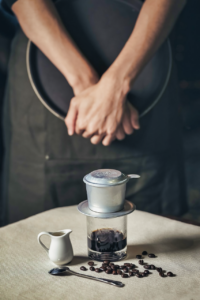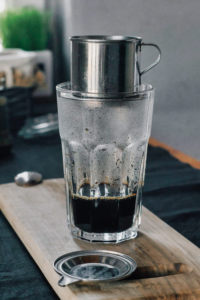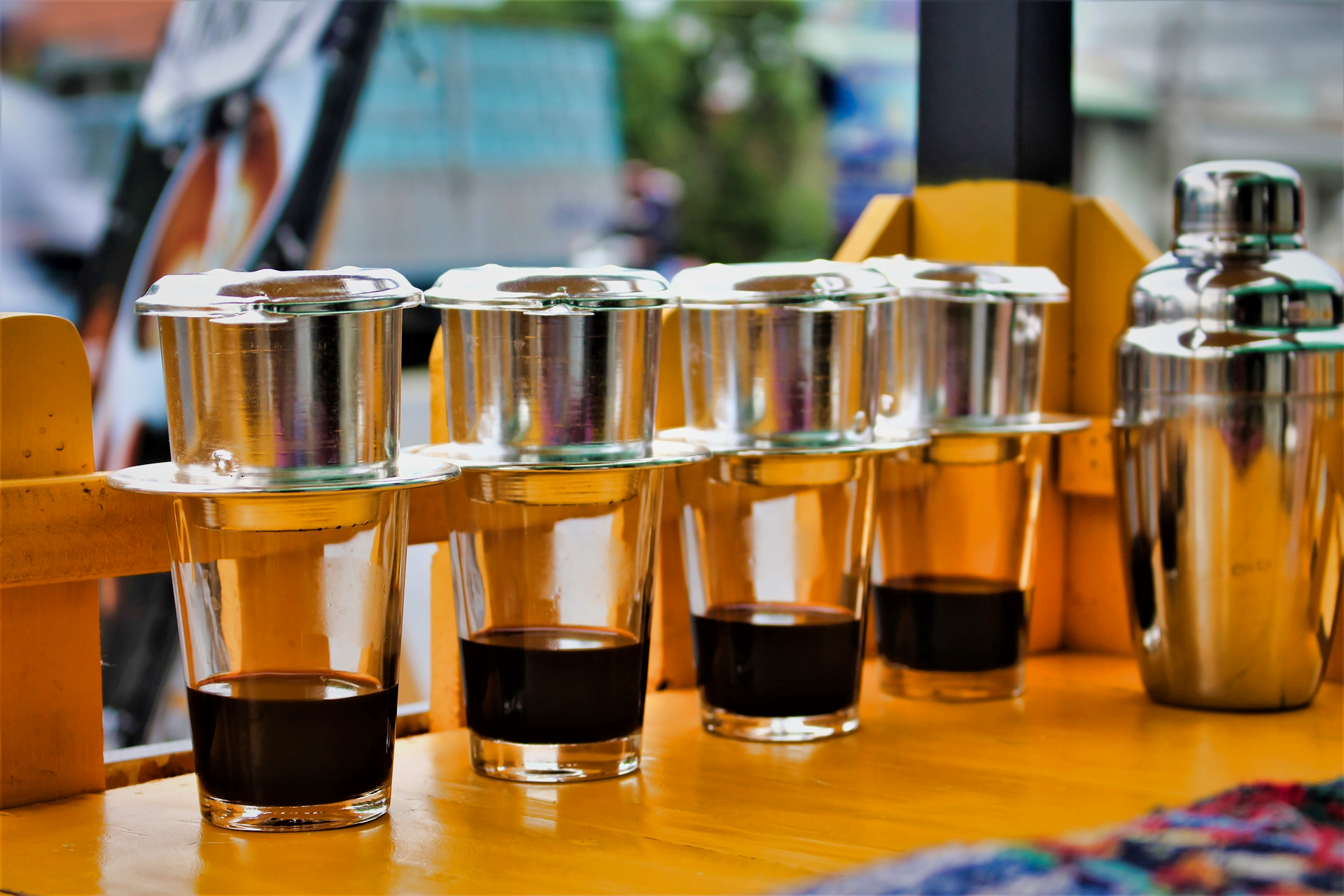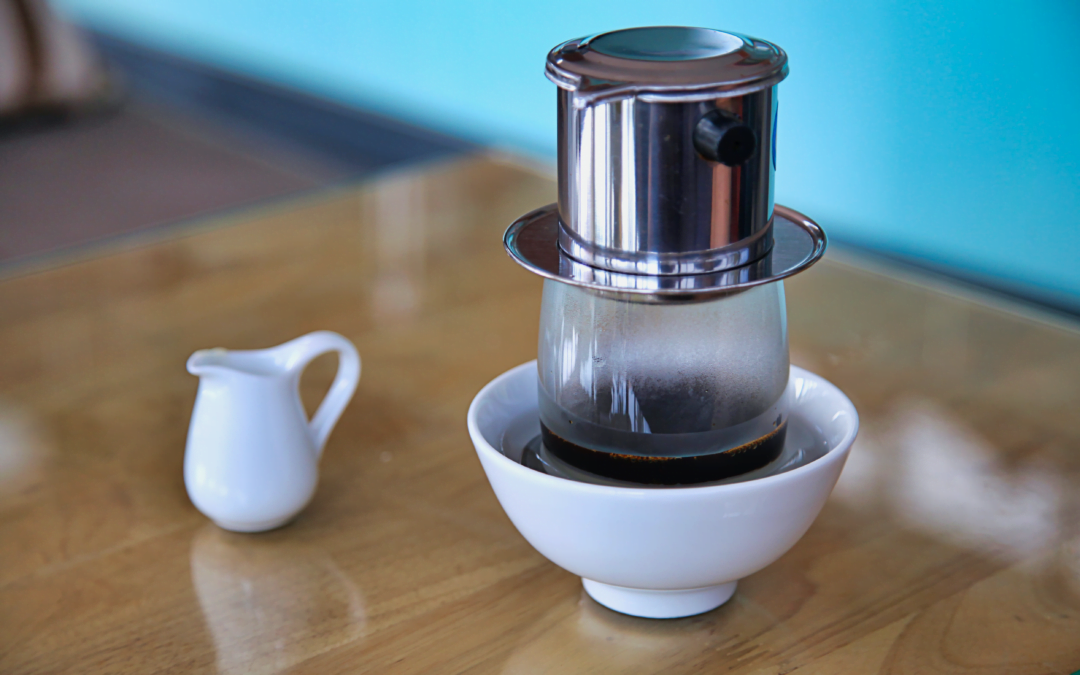If you dive into the world of coffee, you’d be remiss to overlook the world’s 2nd largest producer of coffee. You’ve read the title, we’re obviously talking about Vietnam.
While we’re no experts on the topic, coffee from Vietnam has a special place in our hearts because it was the first product we ever offered. So we always like to promote the region that started our whole coffee obsession as a group.
What is Vietnamese coffee and why is it different?

So what’s special about them? Many of you probably didn’t know that Vietnam was that high up the coffee production chain because they’re not that common on the shelves. Can’t blame you for not noticing what’s not there.
So here’s a quick crash course
Vietnamese coffee is split into 3 general types:
- Vietnamese Drip Coffee
- Vietnamese Iced Coffee (Cà Phê Sữa Đá)
- Vietnamese Mixed Coffee
The first 2 types are self-explanatory. The last one encompasses all the types of unique creations that the Vietnamese people have created to use local ingredients and deal with the lack of widely available refrigeration in the past. This includes:
- Egg coffee (Cà phê trứng)
- Coffee shake (Sinh tố cà phê)
- Pandan coffee (Cà phê lá dứa)
- Coconut coffee (Cà phê dừa)
- Salted cream coffee (Cà phê kem mặn)
For this post, we’ll be focusing exclusively on the drip coffee because it’s the classic. You can’t go deep into the intricacies of a coffee culture without understanding the basics after all.

While Vietnamese coffee is an umbrella term for all the styles of coffee made in Vietnam, there are 3 common factors that differentiate the Vietnamese style and the rest of the world.
Robusta beans
Coffee beans are split into 2 major categories. Arabica which is smoother and lighter on one end, and Robusta which is deeper and more bitter on the other. Vietnam happens to be the world’s #1 producer of Robusta coffee beans though most of us in the west haven’t had a 100% Robusta brew.
Phin coffee infuser
The Vietnamese “Phin” is a slow drip coffee infuser that makes especially strong and concentrated coffee. This on top of the Robusta beans makes Vietnamese coffee markedly strong on its own but also allows it to retain its character when mixed with sweeteners or watered down in their iced coffee (cà phê sữa đá).
Condensed milk
Due to the lack of refrigeration of the times, condensed milk became popular as both a sweetener and creamer over milk and sugar over time. And the unique caramelized flavor from it is part of the signature taste of Vietnamese coffee.
How to make Vietnamese coffee

Out of all the “exotic” coffee styles you can try, Vietnamese drip coffee is about as inexpensive as getting a French Press. A Phin will cost you less than $15 and will upgrade your coffee experience by leagues. On top of that, making a cup in this style is a nice ritual akin to a pour over without needing a scale.
Total Time: 7 minutes
Boil water
Put some water on a kettle until boiling, for coffee nerds the ideal temp is 195-205F (90-96C).
Milk the glass
Put 3 tablespoons (or more if you have a sweet tooth) of condensed milk into your glass or mug, make sure the glass is heat safe.
Prepare the phin
Unscrew the filter press from the phin and remove the perforated insert, then add 2 tablespoons of coffee (preferably authentic Vietnamese Robusta) and shake it to even out the grounds.
Bloom & brew
Screw the insert back on firmly but not too tight, place it over the lid and pour a small amount of boiling water over the surface of the grounds to bloom the coffee and let it sit for 30 seconds. Then place the phin on top of the glass of condensed milk and fill it with boiling water and place the lid on top.
Wait & serve
Wait 3-5 minutes for the coffee to infuse and drip down into your cup, remove the phin and stir the condensed milk and the hot coffee together with a spoon then enjoy.
If you’re gonna serve multiple people, it’s best to have multiple phins but luckily they’re pretty affordable.
Bonus factoid for you guys and gals that actually read this far, Vietnamese-Americans will often make coffee with Café du Monde, a dark roast chicory coffee blend that adds a dimension of flavor that doesn’t exist with pure Robusta coffee. It’s extra-nice that the fragrance of roasted chicory pairs well with condensed milk.
Strong beyond dark roasts
If you’re into French or Italian roasts for how rich and dark they are, you’ll love Vietnamese coffee because it’s the strongest available flavor profile from beans to roast. Normally, a darker roast would mean that the brew has less caffeine but the Robusta beans make up for the evaporated contents in this case.
For those of you looking for dark roasts that also has a strong caffeine buzz, the Vietnamese have perfected this style of coffee without being fancy schmancy about it.
FAQ
What makes Vietnamese coffee different?
There’s 3 elements that separate Vietnamese coffee from the rest of the world: Robusta beans,
What is Vietnamese coffee with condensed milk called?
Brewed coffee with condensed milk is called “cà phê sữa đá” (iced milk coffee) or “cà phê sữa nóng” (hot milk coffee) in Vietnamese.
Is Vietnamese coffee strong?
Vietnamese coffee is stronger than your average cup of joe because robusta beans contain have a stronger flavor and caffeine content. On top of that, the traditional phin brewing makes for a more concentrated brew than your standard drip coffee.
Is Vietnamese coffee healthier?
No, Vietnamese coffee is no healthier because the only health differences that are present are higher caffeine content and sugar from condensed milk.
